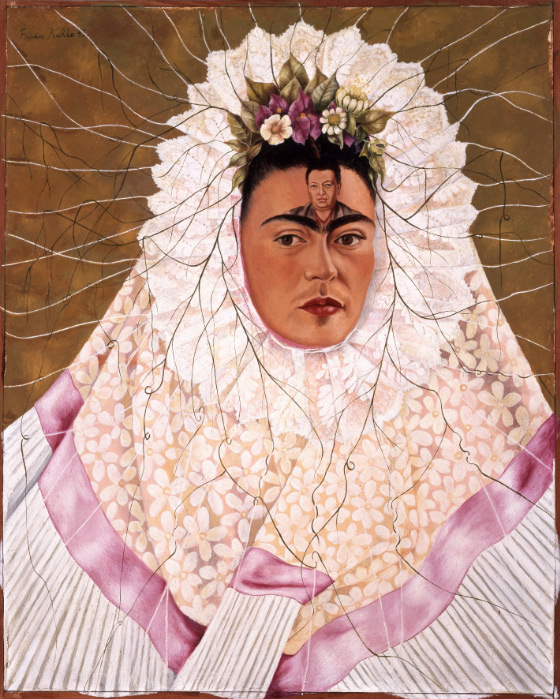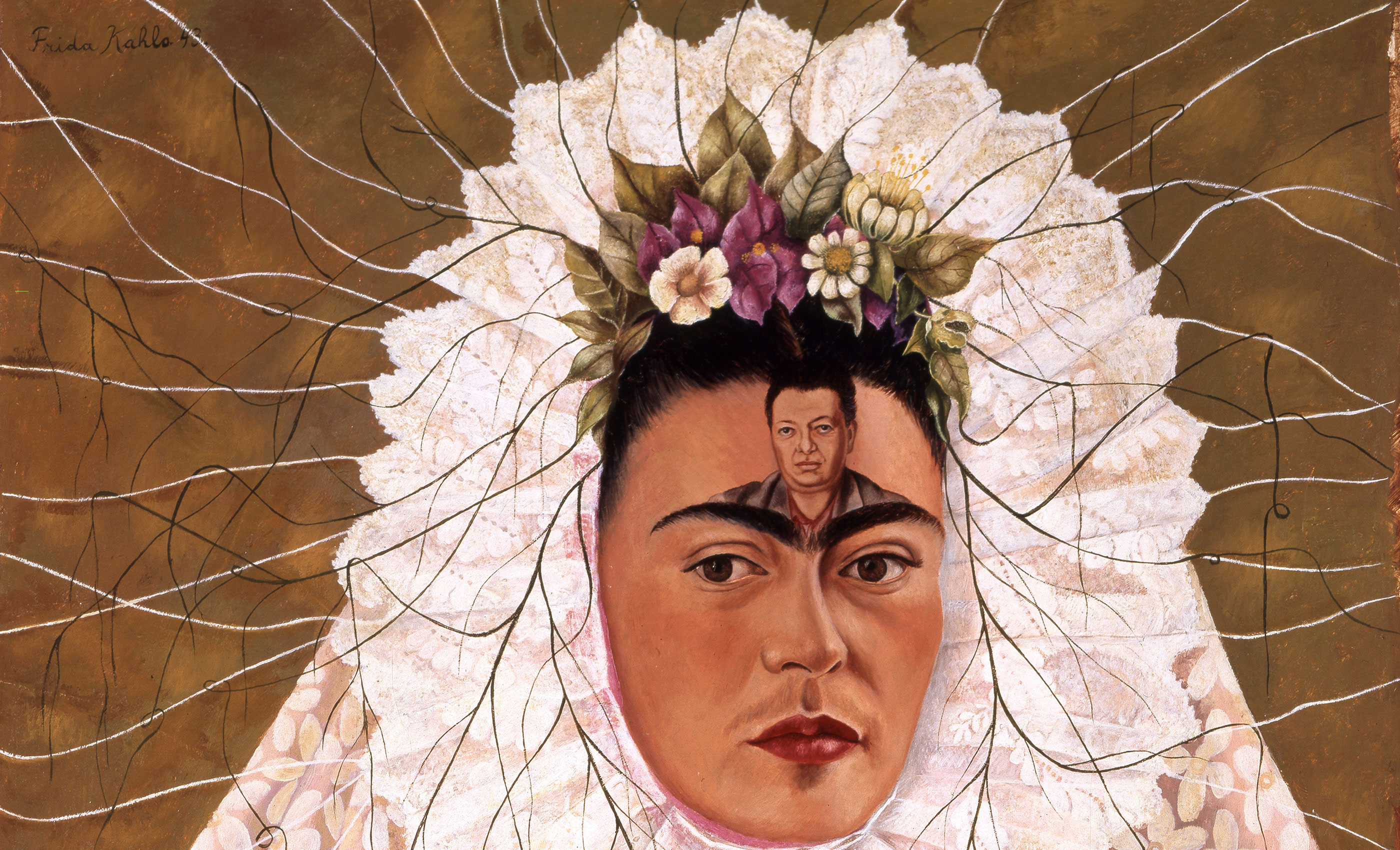La exposición Frida Kahlo, Diego Rivera y el modernismo mexicano en el Denver Art Museum brinda a los visitantes la oportunidad de apreciar obras de artistas iconos de la pintura universal que tomaron inspiración en el México posrevolucionario. Además de Kahlo y Rivera, la muestra presenta artistas de la talla de Miguel Covarrubias, Rufino Tamayo, David Alfaro Siqueiros, María Izquierdo, Remedios Varo, por mencionar algunos cuantos. También se incluye imágenes de grandes fotógrafos, entre ellos Manuel Álvarez Bravo, Lola Álvarez Bravo y Nickolas Muray. La muestra brinda la experiencia del sonido de música de la época. Cada selección musical complementa el ambiente de las diferentes secciones de la exhibición.
El movimiento artístico conocido como modernismo mexicano surge como resultado de las reformas ganadas con el triunfo de la Revolución (1910-1920). La Constitución de 1917 de los Estados Unidos Mexicanos –nombre oficial del país–, sentó las bases que garantizaban cambios sociales y económicos, especialmente de acceso a la educación, mejoras a las condiciones laborales y de tenencia de la tierra. La Constitución incluyó además leyes que establecían la separación total de Iglesia y Estado. Este nuevo orden trajo cambios en todos los aspectos de la vida cotidiana de México. Las décadas de 1920-1940 estuvieron llenas de una vibrante energía que se hizo visible en las expresiones en el arte y la cultura del país. El escritor y filósofo mexicano, José Vasconcelos, secretario de educación pública en ese entonces, promovió una serie de importantes para dar acceso a la educacion al pueblo que hasta ese entonces era, en su gran mayoría, analfabeta. Una de esas iniciativas fue la de encomendar la creación de murales que plasmaran la historia del país en gran escala (Rivera, Siqueiros y Orozco estuvieron al frente de estos esfuerzos). El objetivo principal de esta acción fue el de fomentar un sentimiento de orgullo e identidad nacional. De forma similar, disciplinas como la arquitectura, la fotografía, la cinematografía, la literatura y la música, también se basaban en las profundas raíces culturales del país y se inspiraron en las tradiciones artísticas del pasado y el prospecto de un futuro mejor.

The Jacques and Natasha Gelman Collection of 20th-Century Mexican Art and the Vergel Foundation and MondoMostre in collaboration with the Instituto Nacional de Bellas Artes y Literatura (INBAL). © 2020 Banco de México Diego Rivera Frida Kahlo Museums Trust, Mexico, D.F./ Artists Rights Society (ARS), New York. Photo by Gerardo Suter
Regarding the music selected for the exhibition, the iconic “Huapango Moncayo” starts us on a journey through the art and times of the Mexican Modernists. José Pablo Moncayo, who was a member of the Orquesta Sinfónica de México (Mexican Symphonic Orchestra) and a student of its director Carlos Chávez, composed the piece when he was only 29 years old. At the request of his teacher, Moncayo traveled to Veracruz to study the music of the region. There he took inspiration from popular songs such as "El Siquisiri," "El Balajú," and "El Gavilancito" to create what would become his masterpiece, "Huapango," which premiered at the Palacio de Bellas Artes in 1941, under the direction of Carlos Chávez. The “Huapango Moncayo” is a well-known and well-loved composition with recognizable melodies that capture the spirit of Mexico and it is part of the repertoire of symphonic orchestras all over the world. Its beauty and purely Mexican notes evoke the essence of the country, its places, and its people.
For the section of Mother Earth the selection is “Xochipilli: An imagined Aztec music,” composed by Carlos Chávez in 1940. Maestro Chávez, mentioned earlier, was a composer who had the opportunity to travel to Europe and the US in the early 1920s and was exposed to their modernist ideas. He applied these concepts and interwove them with the sounds of instruments from pre-Columbian times. Like Rivera, Orozco, and Siqueiros in the area of muralism, Chávez received commissions from Vasconcelos to create music that would inspire a post-revolutionary nationalist sentiment. These compositions were included in the repertoire of the National Orchestra and performances were offered at no cost to communities all over the country, in order to educate the masses.
The selection for the Circles of Influence section is “La Macorina,” performed by Chavela Vargas. The lyrics of the song derive from a poem written by the Spanish poet Alfonso Camín to Maria Calvo Nodarse, a woman of who was well known in Cuba for her beauty. Chavela Vargas was born in Costa Rica, but lived most of her life in Mexico and is said to have had a love affair with Frida Kahlo. Vargas also met Calvo Nodarse in Cuba, where she became familiar with the song that was written in her namesake and made it popular internationally. This interpretation of the song is notable because Vargas, as a woman, refused to change the lyrics that address a female lover as the subject.
In this same section of the exhibition, the group Conjunto Jardín interprets the son jarocho from the state of Veracruz, "La bruja," a song with double entrendre lyrics loaded with veiled sexual references that is said to have also been one of Frida's favorites.
The Modernist Heart section musically envelops visitors with the beautiful music of the UNAM Philharmonic Orchestra performing “Danzón número 2,” composed by Arturo Márquez. It is a piece that is considered a jewel of Mexican music. Although it was released in 1994, it may well have been composed in the 1940s, because of its beautiful notes, nationalist flavor, and popular reach.
In the Marvelous Real section, Chavela Vargas accompanies the viewer with her powerful interpretation of “La llorona,” while Patricia Trujano interprets “Canción mixteca,” written by José López Alavez in 1915 and “Dios nunca muere,” a waltz by Macedonio Alcalá music written in 1868 and lyrics written by Vicente Garrido Calderón in 1955. Each of these three songs goes to the Mexican heart directly and immediately. The song “Canción Mixteca” is considered the unofficial anthem of Mexico, and its lyrics evoke a feeling of longing and nostalgia that any individual Mexican living abroad might feel or a sense of connection that any person who has a deep love for Mexico might experience.

